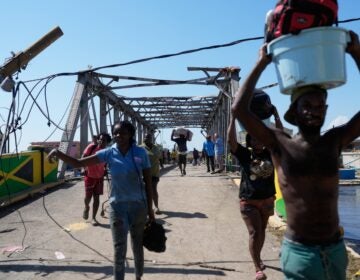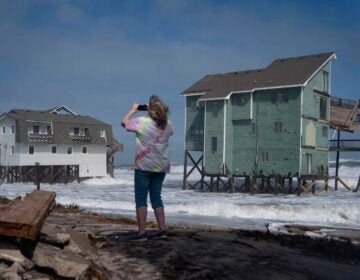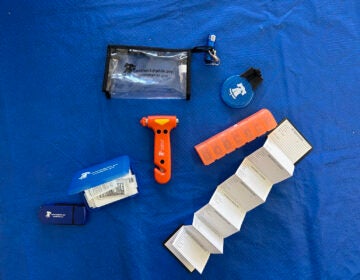The Science of Extreme Weather
Listen 48:21
Hurricanes. Tornadoes. Blizzards. Flooding. Over the past 20 years, we’ve seen a staggering increase in extreme weather events, resulting in millions of deaths and trillions of dollars of damage around the globe.
This increase has made the stakes for precise and accurate forecasts higher than ever — but the best forecast is useless if people don’t act on the information.
On this episode, we explore what scientists are learning, not only about predicting extreme weather, but also about how to deliver their message in a way that will compel people to heed their warnings. Then we’ll look into the aftermath of storms, how communities attempt to recover — and be better prepared for the next storm.
We hear stories about a storm-chaser’s mission to understand tornadoes, how the blizzard of 1993 settled a long debate over meteorological predictions, what happens when storms keep patients from life-saving treatments, and how communities rebuild — or don’t — after being ravaged by severe weather events.
Also heard on this week’s episode:
- We talk with storm-chaser and scientist Adam Houston about his mission to solve a longtime mystery: the exact conditions in which supercell thunderstorms generate tornadoes. Adam leads a team of researchers who are trying to gather better data to make more exact predictions.
- Most of us take weather forecasts for granted — but as it turns out, decades of research and debate went into creating a prediction model that works. In 1993, that model was still in question — until the east coast of the U.S. was slammed by the “blizzard of the century.” Jad Sleiman reports.
- Extreme weather forecasts can save lives — but that doesn’t mean the public always listens. Reporter Kerry Sheridan experienced that first-hand when she rode out Hurricane Ian, a massive and deadly Category 4 storm that recently hit southwest Florida. She tells the story of how extreme weather events are prompting meteorologists to change the way they deliver their warnings.
- When a freak snowstorm knocked out power and water in Texas back in 2021, thousands of dialysis patients were left in the lurch. Many found themselves trapped in their homes, unable to access life-saving treatment as deadly toxins built up in their blood. Reporter Sara Willa Ernst has this story on what happened — and Texas’ efforts to prepare better for future storms.
- Escaping extreme weather is one thing — but how do communities rebuild after devastating damage? That’s the topic of the new podcast “In Deep,” which follows residents of Lake Charles — a small city in Southwest Louisiana — that over the past few years was pummeled by consecutive hurricanes and a severe blizzard. We hear an excerpt from the podcast, and talk with reporter and host Lauren Rosenthal about the toll all of this has taken on Lake Charles residents.
WHYY is your source for fact-based, in-depth journalism and information. As a nonprofit organization, we rely on financial support from readers like you. Please give today.






